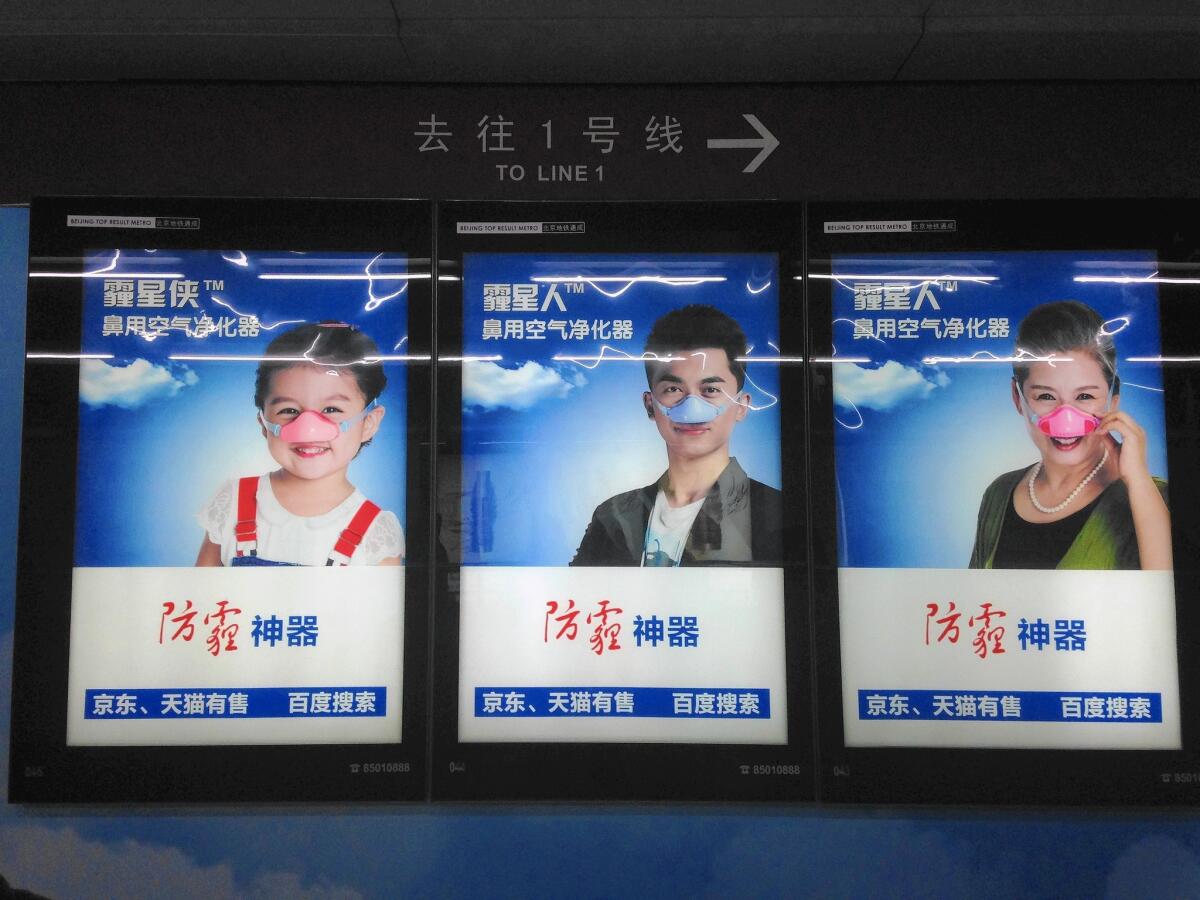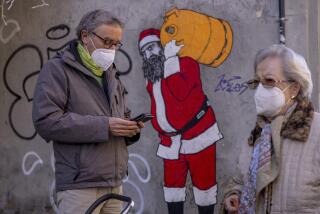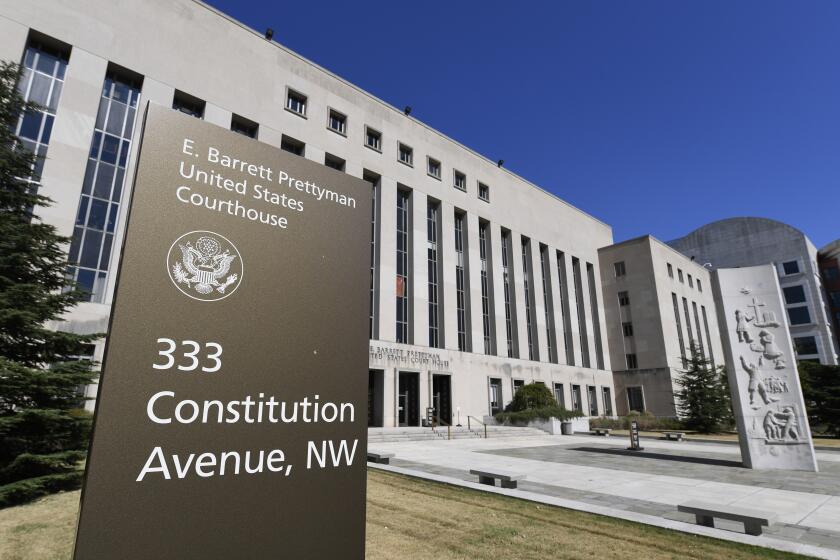In smoggy China, masks become stylish accessory

- Share via
Reporting from Beijing — For millions of Chinese, China’s air pollution crisis has made donning a mask as reflexive as reaching for an umbrella when it rains. The country sees heavy pollution so frequently that weather forecasts have a special symbol for “haze.” But nothing can ruin a meticulously assembled outfit like a face covering that was designed for an operating room or, worse yet, a construction site.
Fashion designers have stepped into the void with stylish pollution masks, promising Chinese a way to protect themselves against the smog and look good doing so.
Available in bold colors and flashy patterns to accessorize any outfit, some masks are made with elegant fabrics such as satin. Others, studded with glittering crystals, would fit in fine at a red-carpet event. Lately, they’ve even shown up on runways from Paris to Hong Kong — and some are touted as having passed rigorous medical testing.
During China Fashion Week last month, designer Yin Peng accessorized his collection for sportswear brand Qiaodan with a wide variety of masks. He paired running gear with sleek mouth covers, used matching stripes and patterns, even experimented with conceptual gear akin to full-face fencing masks.
The display drew a lot of attention. Photos of his models flooded the Chinese Internet, with many captions devoted to the facial covers.
“I didn’t expect to receive so many calls from the media, and the focus was only on the masks,” he said in an interview.
Yin explained that the masks were part of his interpretation of the show’s theme, “Future.”
“To me, future is a combination of the environment and the current attitude toward it,” he said.
Yin is hardly alone among Chinese designers using their fashion lines to reflect life in their country’s hazardous urban air.
On Paris Fashion Week runways, Beijing-based designer Masha Ma paired her urban collection with masks studded with Swarovski crystals. She also worked with Chinese designers Qiu Hao and Xander Zhou to create masks for luxury online retailer yoox.cn.
Masks printed with black-and-white geometric patterns were given out as gifts after the runway show at Shanghai Fashion Week in April. And designer Nina Griffee worked with California-based mask brand Vogmask during Hong Kong Fashion Week in July, pairing oversize masks with evening gowns, among other outfits.
Despite increasing awareness in China of the hazards of intense smog, the vast majority of Chinese don’t wear masks, even on heavily polluted days. For many people, that choice is more about comfort than safety — many masks are hot and stifling.
Still, many Chinese are trying to protect their lungs. The Chinese e-commerce site Taobao.com said consumers spent $141 million buying masks on the site last year. It’s a necessary step when northern China’s air pollution can reduce your life expectancy by five years, according to research published last year in the Proceedings of the National Academy of Sciences.
Vogmask sells Griffee’s runway-ready masks on its website, alongside ones printed with hummingbirds, tie-dye patterns and geometric designs. They sell for $29 to $35 in China.
“I think absolutely masks are valid as a fashion item,” Christopher Dobbing, Vogmask’s China director, said in an interview. The fashion show helped boost Vogmask’s popularity in China, as did a photo that went viral showing celebrity Huang Lei and his family wearing Vogmasks. Huang is a participant on the popular reality show “Dad, Where Are We Going?”
Vogmask began fashioning masks to cater to people battling dust during Nevada’s Burning Man festival; its products are made from microfiber and the company says they filter out 99% of hazardous particles if they fit properly.
Those who object to covering their mouths with masks have more gadgety options.
A brand called Infipure offers filters that can be inserted directly into the nostrils, while another brand, Maixingren, sells a device that fits over the nose like a clown accessory. A team in Chongqing has recently unveiled a headset-style air purifier, though the snorkel-esque design might earn a citation from the fashion police.
The usefulness of many masks remains questionable. Richard St. Cyr, a physician and noted commentator on air pollution in China, said there’s a notable lack of data, with no medical consensus and no reliable long-term studies on how well they work. “We’re kind of making it up as we go along,” he said.
China does not have a national standard under which masks are tested and rated, though the first such regulations should be implemented by June, state-run media said recently. Nearly half the masks now on the market will be blocked by the new standards, the reports said.
For now, St. Cyr recommends 3M masks, bulky white coverings that have been used by U.S. construction workers for years. They may not be chic, but they work.
“The only way to tell is to have independent tests,” he said of the fashion-minded new masks. “Why spend the money if there’s no evidence?”
Silbert is a special correspondent.
More to Read
Sign up for Essential California
The most important California stories and recommendations in your inbox every morning.
You may occasionally receive promotional content from the Los Angeles Times.










